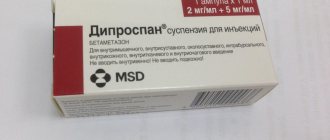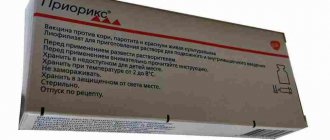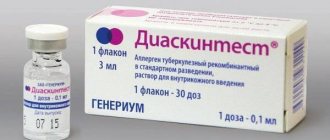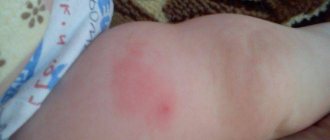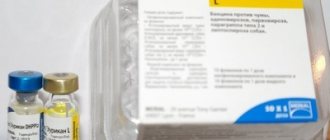Despite the fact that medicine does not stand still, it cannot completely cope with allergies. The number of children suffering from allergies is increasing every day. It can occur against the background of insect bites, food intolerance, and temperature changes. Therefore, experts are developing new drugs to effectively combat allergies. Zodak is a second-generation drug that is available in drops, syrup and tablets. It is important to know how to take medicine correctly to help your baby.
Composition, description, release forms
Finding Zodak drops and tablets with instructions in a pharmacy is not a problem. Manufacturers have launched the production of the drug Zodak in drops in a 20 ml bottle . Each milliliter is equal to 20 drops. This allows you to approximately calculate how much this volume is enough for a child. The dark bottle with a dropper cap is convenient to use.
The transparent medicine contains the active ingredient - cetirizine dihydrochloride. Experts note that it helps to quickly relieve symptoms and prevent the development of allergies in the future.
Drops and tablets also contain additional substances. These include:
- water;
- glycerol;
- acetic acid;
- propylene glycol.
Together with the drops, the drug is available in syrup . Often parents think about changing the Zodak form to a sweeter composition. However, it is important to remember that the concentration of substances in syrup is higher, so you cannot decide on your own whether to change drops to syrup. This should be done by a doctor who takes into account the age and personal characteristics of the child.
Indications
The children's instructions for Zodak drops and tablets indicate that the drug is prescribed for the following symptoms:
- seasonal and year-round allergic rhinitis;
- conjunctivitis;
- itching with chickenpox;
- hay fever;
- dermatosis;
- bronchospasms;
- hives;
- Quincke's edema;
- eczema;
- diathesis.
As doctors have noted, Zodak drops, tablets and syrup make it easier for a child to tolerate vaccination and reduce the occurrence of side effects.
Many have already appreciated the benefits of using Zodak, which copes well with itching, coughing and sneezing . If a child has wounds and scratches them, an infection may occur. The medicine saves in a very short period of time.
Contraindications
Zodak should not be given to small children. Its use is prohibited for up to a year. Despite the fact that its use can lead to apnea, the doctor can prescribe the medicine before the age of 1 year, but under personal supervision.
The use of the drug in any form: syrup, tablets, drops, is contraindicated in case of liver problems, as well as in case of personal intolerance to the substance in Zodak.
How the drug works
Zodak is distinguished by the fact that the drug takes effect within 20 minutes. After an hour, the patient receives complete relief. Taking one dose, you can have peace of mind throughout the day. This is exactly how long the effect of the drug lasts. After 20 hours after use, the medicine is excreted in the urine from the kidneys . It is important that Zodak does not accumulate even after long-term use, so it does not cause any harm to the body.
That is, the procedure is this: after the drug enters the blood, it moves to the receptors. It influences the symptoms that provoke allergies. The activity is blocked. Negative manifestations weaken and then disappear completely. At this moment, immunity to allergens is formed. Therefore, allergy symptoms disappear: tears stop flowing, the skin does not itch or itch, swelling of the nose and larynx subsides.
Zodak drops for oral administration 10 mg/ml 20 ml dropper bottle 1 pc. in Cherepovets
Pharmacological action: Pharmacodynamics
Cetirizine is a metabolite of hydroxyzine, belongs to the group of competitive histamine antagonists and blocks H1 histamine receptors.
In addition to the antihistamine effect, cetirizine prevents the development and alleviates the course of allergic reactions: at a dose of 10 mg 1 or 2 times a day, it inhibits the late phase of eosinophil aggregation in the skin and conjunctiva of patients with allergic reactions.
Clinical efficacy and safety
Studies in healthy volunteers have shown that cetirizine, when taken in doses of 5 or 10 mg, significantly inhibits the rash and redness response to high concentrations of histamine in the skin, but the correlation with effectiveness has not been established. A 6-week placebo-controlled study involving 186 patients with allergic rhinitis and concomitant mild to moderate bronchial asthma showed that cetirizine 10 mg once daily reduced symptoms of rhinitis and did not affect pulmonary function.
The results of this study confirm the safety of cetirizine in patients suffering from allergies and mild to moderate bronchial asthma.
A placebo-controlled study showed that taking cetirizine at a dose of 60 mg/day for 7 days did not cause a clinically significant prolongation of the QT interval. Taking cetirizine at the recommended dose has shown an improvement in the quality of life of patients with year-round and seasonal allergic rhinitis.
Children.
In a 35-day study in patients 5–12 years of age, there was no evidence of resistance to the antihistamine effect of cetirizine. The normal skin reaction to histamine was restored within 3 days after discontinuation of the drug with repeated use.
A 7-day placebo-controlled study of cetirizine syrup in 42 patients aged 6 to 11 months demonstrated the safety of its use. Cetirizine was prescribed at a dose of 0.25 mg/kg twice daily, which corresponds to approximately 4.5 mg per day (dose range was 3.4 to 6.2 mg per day).
Use in children from 6 to 12 months is possible only as prescribed by a doctor and under strict medical supervision.
Pharmacokinetics
The pharmacokinetic parameters of cetirizine when taken in doses from 5 to 60 mg change linearly.
Suction
Tmax in blood plasma is (1±0.5) hours, and Cmax is 300 ng/ml.
Pharmacokinetic parameters such as plasma Cmax and AUC are uniform. Food intake does not affect the complete absorption of cetirizine, although its rate decreases. The bioavailability of different dosage forms of cetirizine is comparable.
Distribution
Cetirizine is (93±0.3)% bound to blood plasma proteins. Vd is 0.5 l/kg. Cetirizine does not affect the protein binding of warfarin.
Metabolism
Cetirizine does not undergo extensive first-pass metabolism.
Removal
T1/2 is approximately 10 hours.
When taking cetirizine at a daily dose of 10 mg for 10 days, no accumulation was observed.
Approximately 2/3 of the dose taken is excreted unchanged in the urine.
Special patient groups
Elderly.
In 16 elderly people, with a single dose of cetirizine at a dose of 10 mg, T1/2 was 50% higher, and clearance was 40% lower compared to non-elderly people.
The decreased clearance of cetirizine in elderly patients is likely due to decreased renal function in this category of patients.
Kidney failure.
In patients with mild renal failure (Cl creatinine >40 ml/min), pharmacokinetic parameters are similar to those in healthy volunteers with normal renal function.
In patients with moderate renal failure and patients on hemodialysis (Cl creatinine <7 ml/min), when taking cetirizine orally at a dose of 10 mg, T1/2 is extended by 3 times, and total clearance is reduced by 70% relative to healthy volunteers with normal nocturnal function.
For patients with moderate or severe renal insufficiency, an appropriate change in the dosage regimen is required (see "Dosage and Administration").
Cetirizine is poorly removed from the body during hemodialysis.
Liver failure.
In patients with chronic liver diseases (hepatocellular, cholestatic and biliary cirrhosis), with a single dose of cetirizine at a dose of 10 or 20 mg, T1/2 increases by approximately 50%, and clearance decreases by 40% compared to healthy subjects. Dose adjustment is only necessary if the patient with hepatic insufficiency also has concomitant renal insufficiency.
Children.
T1/2 in children from 6 to 12 years is 6 hours, from 2 to 6 years - 5 hours, from 6 months to 2 years - reduced to 3.1 hours.
How many drops should I take and how often?
Depending on the age of the child, the dosage of the drug will differ. Since it cannot be officially given until one year, the calculation of the medicine begins at 12 months . So, the dose for children:
- children aged 1–2 years are prescribed the drug twice a day, 2.5 ml (5 drops);
- children aged 2–6 years can be helped with 10 drops; it is recommended to give them once a day or divide the dose into two times: 5 drops in the morning and the same amount in the afternoon;
- for children from 6 to 12 years old, the recommended dose is 20 drops once a day before bedtime.
Suprastin or Fenistil: which is better for children on the day of vaccination?
Suprastin allows you to get rid of mild allergy symptoms. It is given to children one-fourth of the tablet. It is recommended to pre-mix it with food. Give three times a day.
In case of severe adverse reactions, injections of the drug at 0.25 milliliters are indicated. The medication should be taken for several days.
Fenistil is prescribed to infants in the form of drops. They taste good. They are often added to the milk mixture a few drops three times a day.
The medication should be taken not only before DTP, but also when administering the Pentaxim vaccine. As before DTP, Fenistil is recommended to be prescribed two or even three drops several times a day.
Experts recommend giving preference to Fenistil, since it has virtually no side effects.
What you need to know about taking the medicine
To safely store the medicine, the cap of the bottle must be pressed down before opening and then unscrewed counterclockwise .
The instructions indicate that Zodak drops should be given to children after first dissolving them in water. It doesn't matter what time you give them. This can be any time of the day, regardless of food intake. You can not dissolve the drops, but simply drop them directly into the child’s mouth. There are situations when the appointment time is missed. In this situation, you need to give drops as soon as possible. However, you should not give two doses at once. Exactly as much as you need to take at one time.
If a situation arises when you don’t have a doctor’s prescription with you, you can see how to properly take drops or tablets in the instructions. The number of drops for each age is indicated there. But the best option is to stick to the dose prescribed by the doctor, regardless of what is indicated in the instructions.
How does Zodak interact with other medicines?
Despite the fact that drops and tablets are well absorbed by the body , the use of Zodak with other medications is not recommended. Only a doctor can tell you whether drops can be combined with other substances. For example, combination with sedatives is not suitable for him. Even if the pharmacist says that this can be done, it is better to refrain so as not to harm the child.
Zodak drops are allowed to be taken by patients with diabetes. The drug contains the sweetener saccharin. The instructions say that you should not take tablets, drops, or syrup with alcohol.
Does the drug have side effects?
Side effects , as a rule, do not appear. However, sometimes:
- a disorder occurs;
- the intestines are swollen;
- dry mouth appears;
- skin rashes, urticaria, itching;
- headache and dizziness;
- drowsiness and agitation appear;
- weakness and tachycardia may appear;
- dyspnea;
- lethargy.
Each of the above symptoms is short-lived. It can be easily eliminated after stopping taking the drops. You should warn your pediatrician so that he can select the optimal analogue drug.
If at least one symptom appears, you should consult a specialist. In case of overdose, you need to follow a simple procedure. First of all, give more fluids to flush the stomach. After this you will need coal or any sorbent.
How and for how long to store the medicine
The medicine is prescribed by a doctor, but you can buy it at any pharmacy, as it is an over-the-counter drug. The drops should be stored in a room with a temperature of no more than 25 degrees. The bottle should not be left in a place unprotected from the sun. After opening, Zodak drops are stored for two years, and syrup for three years.
Why are Zodak drops used before vaccination?
Recently, pediatricians are increasingly recommending the use of drops for prophylaxis before vaccination . They should be given to the child three days before the procedure and three days after it. This will help children who suffer from allergies tolerate vaccination more easily. The pediatrician selects the prophylactic dose. The number of drops depends on the condition of the child and the severity of side effects.
Antihistamines before DPT vaccination Zyrtek Zodak fenistil suprastin
- Before the first DTP vaccination, antihistamines are prescribed to children who are prone to allergic reactions. Children who periodically experience skin rashes and allergic dermatitis.
- And before the second and subsequent DPT vaccinations, antihistamines are prescribed to children who had undesirable reactions to the previous DPT vaccination. A rise in temperature to high numbers or pronounced local reactions. Antihistamines reduce the intensity of vaccination reactions.
Antihistamines such as Zyrtec, Zodak, Fenistil, Suprastin or others are prescribed in an age-specific dosage three days before the DPT vaccination, on the day of the DPT vaccination and three days after it.
Most importantly, the mother herself should not be afraid of the DTP vaccine . The mother's anxiety is passed on to the child. The baby begins to worry and tolerates the vaccine worse. If mom sets herself up correctly, then DPT vaccinations and all four will go through easily, without complications.
This is all you need to do before vaccination . Stay healthy.
How to choose a similar drug for children?
When choosing an analogue of Zodak, you should remember that the drug must contain the same active ingredient. As a rule, cheaper drug options are chosen. Among the structural analogues we can highlight:
- “Zirtek”, which will cost 300–400 rubles;
- “Parlazin” with a price from 100 to 300 rubles;
- “Zincet” and “Cetirinax”, availability and prices must be checked at the pharmacy.
Most parents chose Zyrtec, despite the fact that its price is slightly higher. Experts advise using drops that can replace Zodak and help get rid of allergy symptoms - Fenistil and Claritin. However, only a doctor selects a similar drug.
If a child has a runny nose, a specialist can prescribe effective remedies against allergic rhinitis:
- Azithromycin.
- Avamis.
- Nasonex.
- Nazol baby.
As for reviews of drops, many parents confirm the positive effect of drops on the development of the disease. There are almost never any side effects, and the drug works within half an hour. The effect of the drug on insect bites is especially highlighted.
